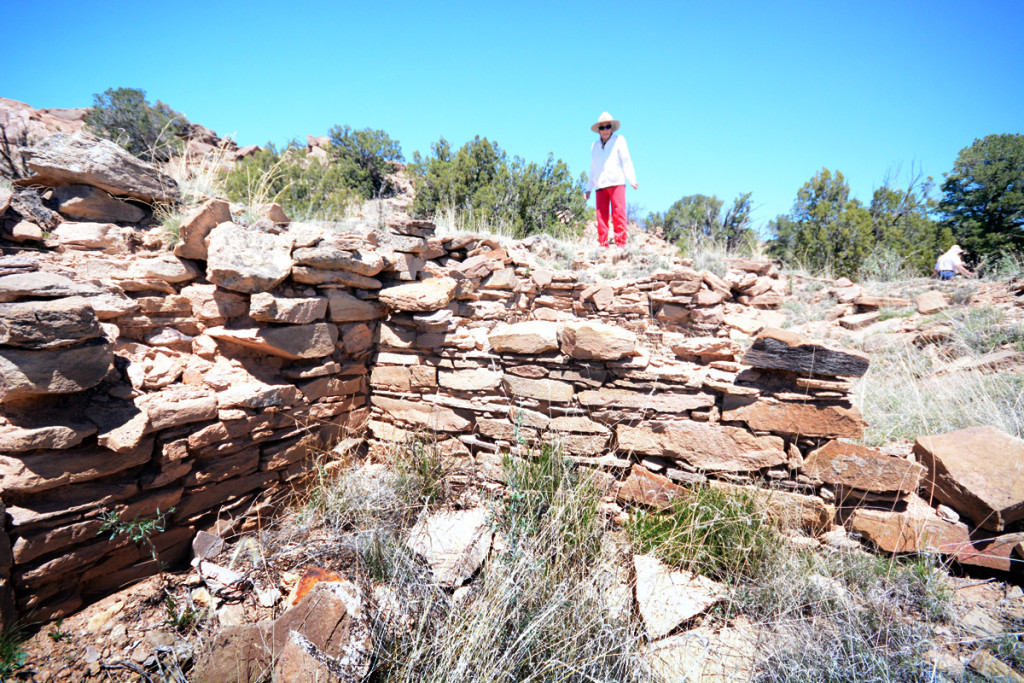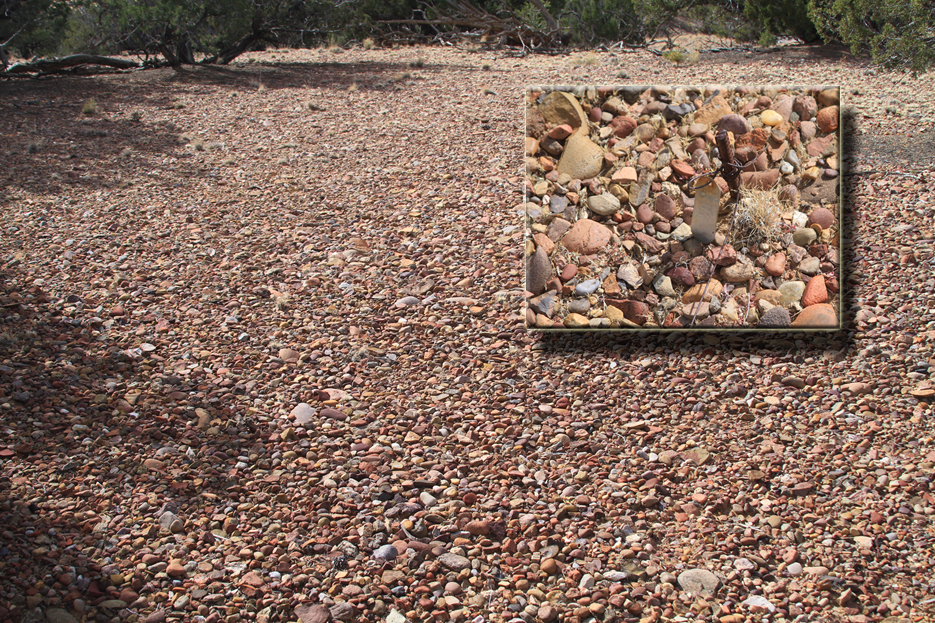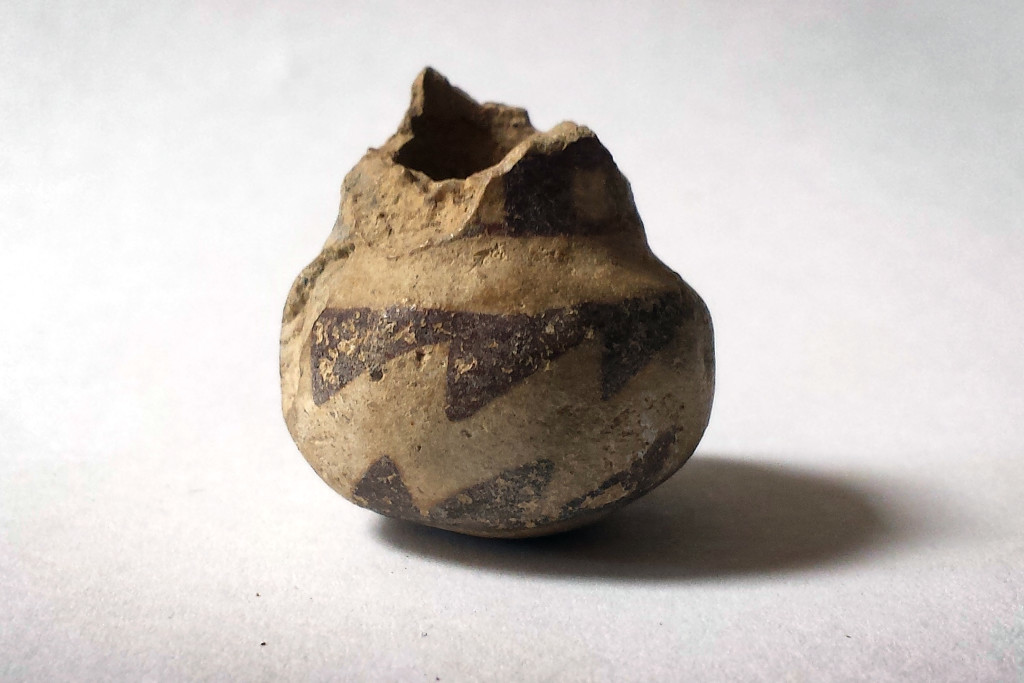Tom Davis has generously donated an absolute gem to The Archaeological Conservancy. This gem, the Davis Ranch, has multiple prehistoric sites on it and is located north of Quemado, New Mexico, alongside a dry wash that once may have been the source of water and fertile sediments utilized by the prehistoric inhabitants of the region. The land being donated to the Conservancy will result in five separate pieces ranging in size from approximately 2 acres to 15 acres in size. Each piece of property has its own unique value archaeologically, but taken a whole, represents a significant part of the New Mexico landscape that was utilized for over 12,000 years.

Touring one of the Davis Ranch’s many sites with Virginia Davis. Photo Chaz Evans/The Archaeological Conservancy.
During a lifetime of work on the ranch, Mr. Davis collected ceramics and ground stone from various parts of the ranch and he has generously donated these collections to the Western New Mexico University Museum and to The City of Albuquerque Open Space Visitors Center for academic study, and public enjoyment.
The ground stone artifacts collected by Davis, on display at the Albuquerque Open Space Visitors Center, indicate that significant plant processing was taking place at the site. Several of the manos used to grind seeds or maize would have taken two hands to use. This indicates a more intensive processing than single hand manos found in pre-agricultural sites. There were also several smaller grinding vessels that may have been used for the processing of medicinal plants. These small vessels may have also have been used for processing pigments for dying cloth or painting ceramics.
The Davis property falls within a geographic area that is known by archaeologists as the Nothern Mogollon Culture area, which was prehistorically occupied between A.D. 200 – A.D.1450. Importantly, the Mogollon Culture is known for the first expression of ceramics in the American southwest and according to some scholars, may be directly tied to Mesoamerican groups. Many of the ceramic pieces collected from the ranch indicate a tie to groups in Arizona. As archaeologists from the Conservancy, we (Tamara Stewart and Chaz Evans) visited the Davis Ranch with Tom and Virginia Davis. Our mission was to place corner pins for each of the archaeological sites in anticipation the official survey of each parcel.
We had a tremendous day listening to the history of the ranch, and Tom’s vivid memories of living on the property before electricity, refrigeration and telephone. He could point to a fence line and tell you “there’s 1,454 posts there and we built that fence in 10 days…” It was truly magical to imagine living in a simpler time and a bit annoying that now, even out there in that remote landscape, my cellphone still managed to ding every time a new email came in.
It is always a pleasure to work with people who are passionate about preservation and conservation, and it amazes me that there are people who value history over money. This donation is truly remarkable collection of sites, and with future research may go a long way towards clearing up the boundaries of the Mogllon and Anasazi culture area, and shed some light on the Paleoindian presence in New Mexico.

Virgina Davis touring standing stonework at the Davis Ranch with TAC. Photo Chaz Evans/The Archaeological Conservancy.
Read more in American Archaeology, Summer 2015 | Vol. 19 No. 2.






